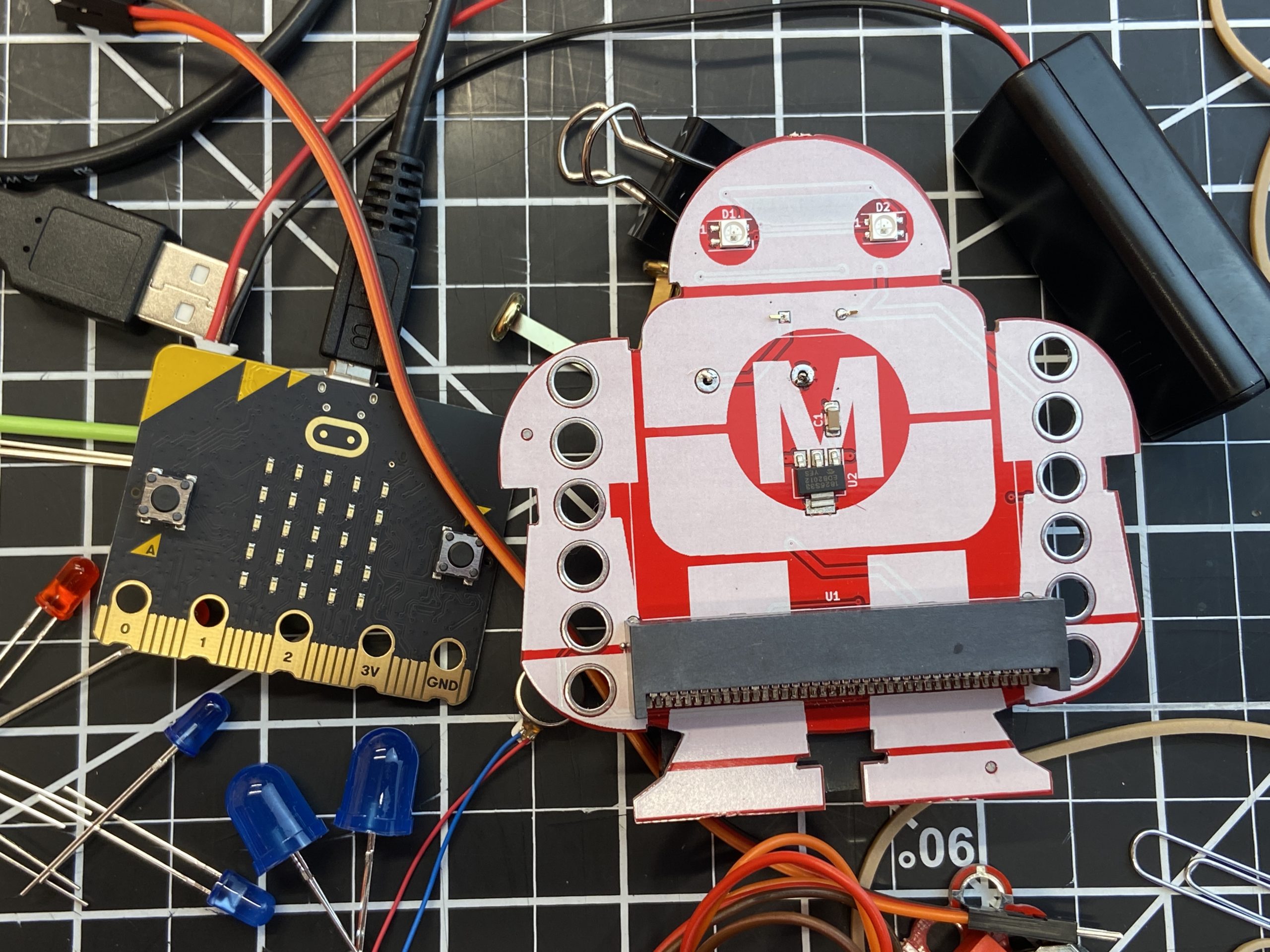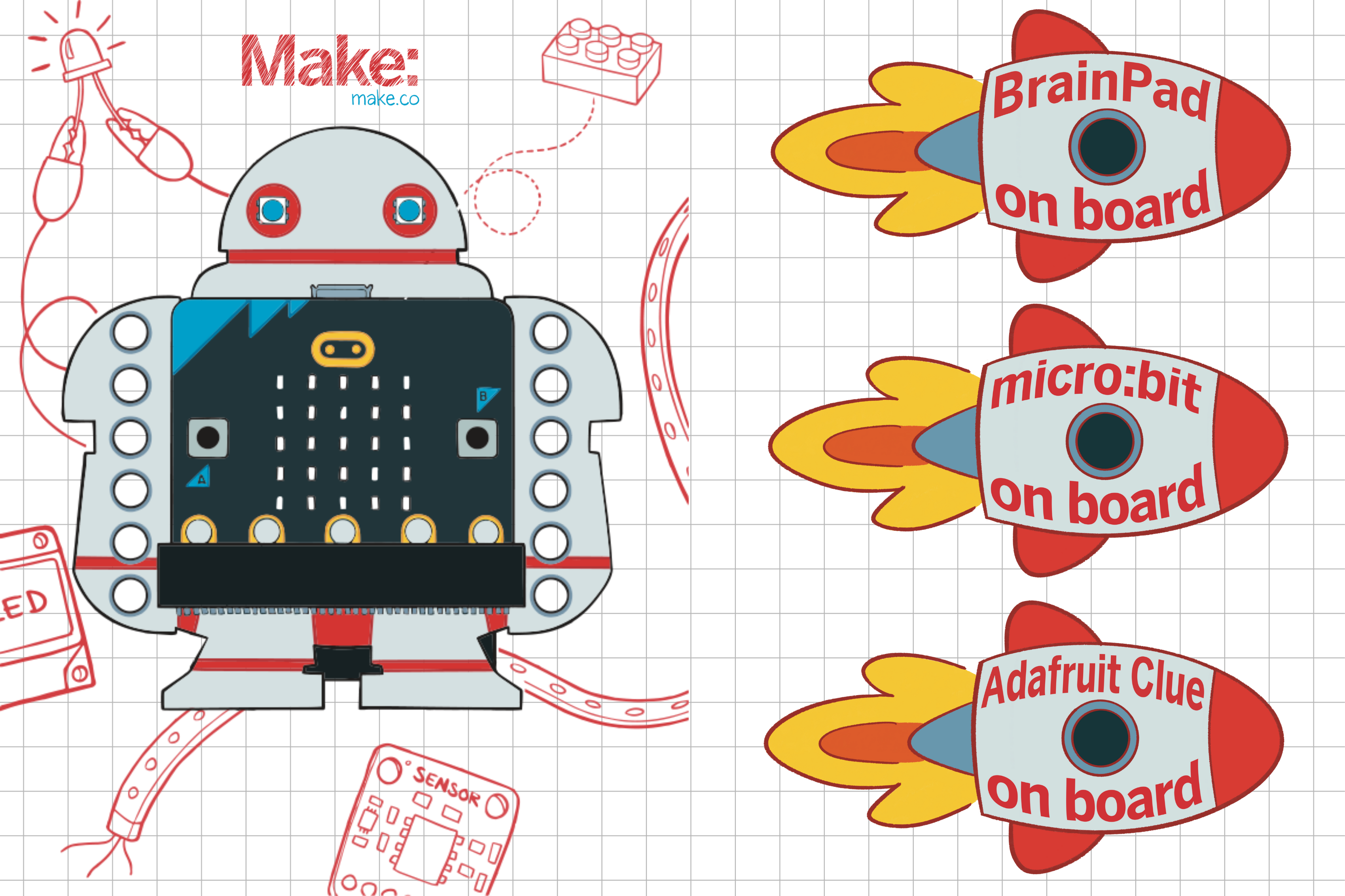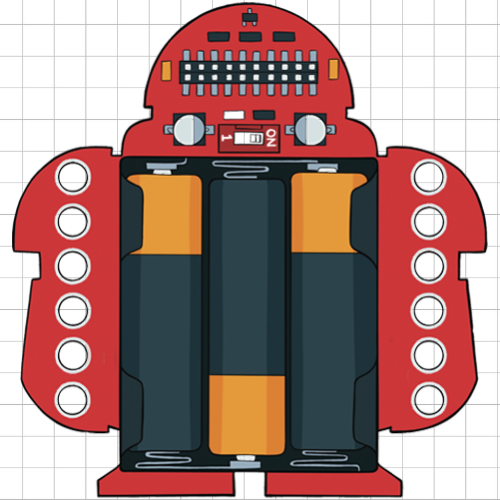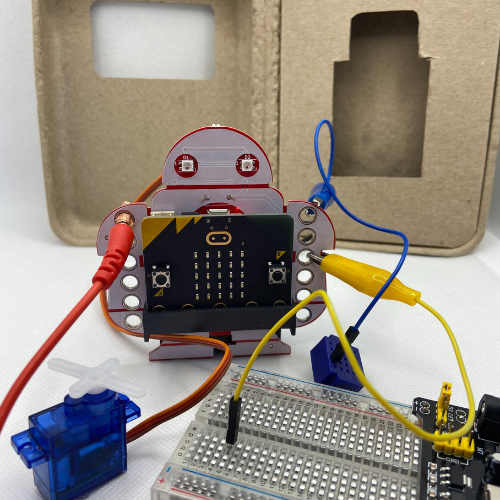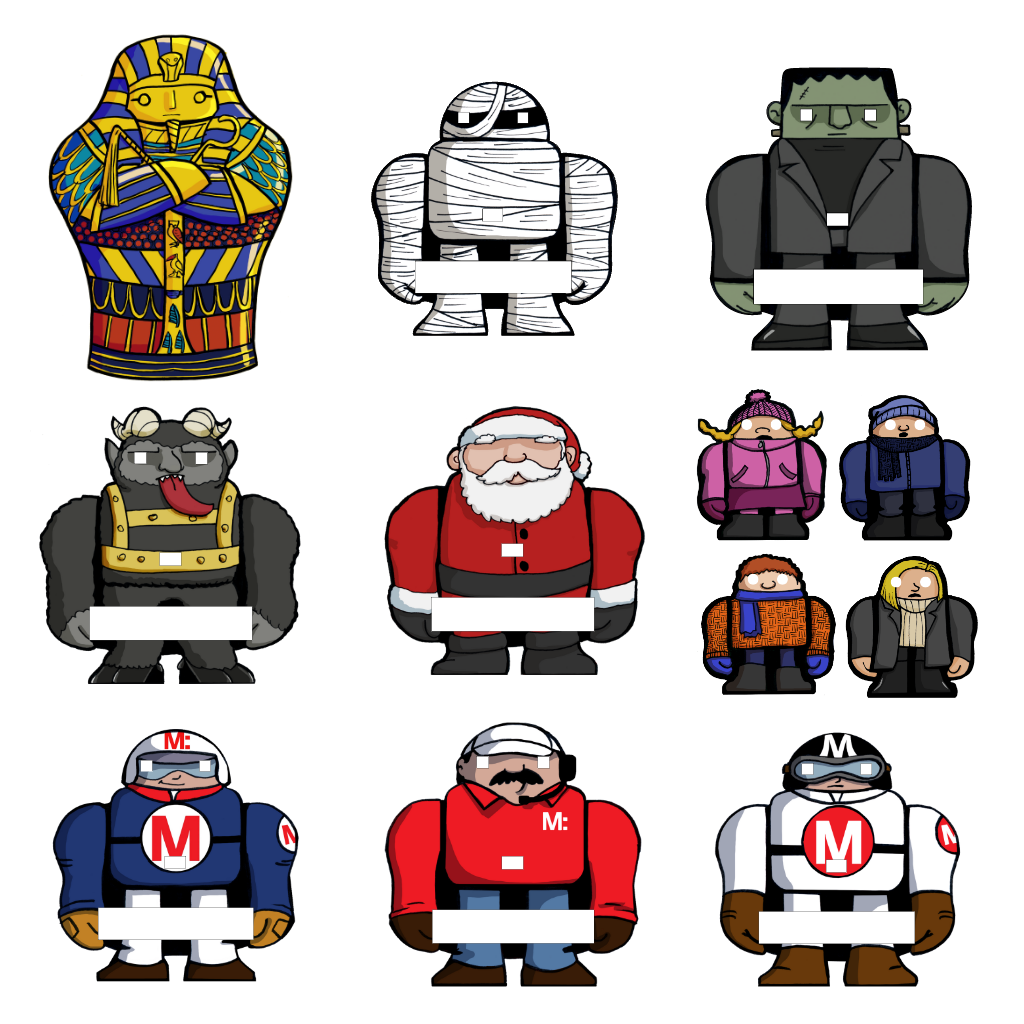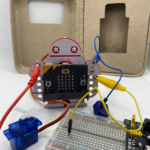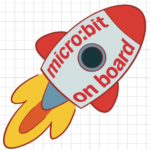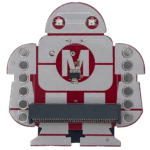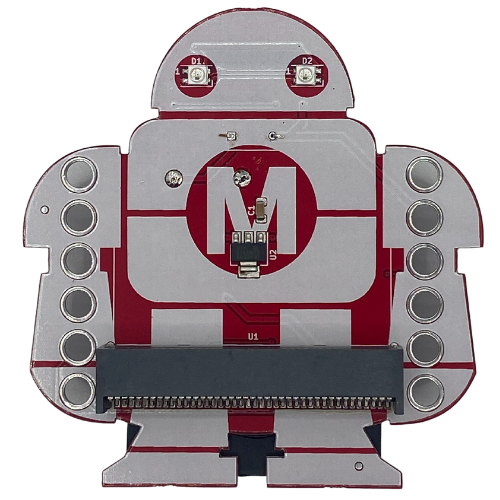
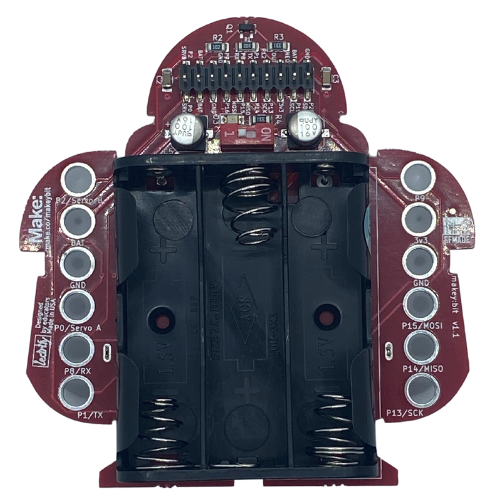
The history of the micro:bit is interesting, compelling, and worth sharing in order to understand the benefits of Makey:bit.
The BBC micro:bit is a microcontroller designed to teach coding and physical computing to students in the UK. A stated goal with the design of the micro:bit was to enable all students to be builders, not just consumers, of technology. The BBC micro:bit stood on the shoulders of the heritage of the BBC micro, which way back in the 80s, gave every student in the UK a computer to learn programming.
As a microcontroller, the micro:bit enables easy control through code of inputs and outputs (through what we call “pins”). Each pin is like a plug into a computer. Some pins are only capable of controlling one thing (like a speaker or headphone) and others are “smart” and can control more thane on thing at the same time.
For more information on microcontrollers visit the Make: board guide page
Makey:bit works with:
- All versions of the BBC micro:bit (v.1 & v.2),
- Adafruit CLUE, and
- BrainPad Pulse.
The micro:bit has lots of pins to control inputs and outputs (as many as 20!) but to make it as small as possible, the designers only made is easy to access three of those pins. With the Makey:bit, we can access another 10 of them (the others are already used by the stuff on the micro:bit like the LEDs on the front and some of the sensors) Your Makey:bit adventure board makes it easy to make connections using alligator clips and pin connections for:
- Servo motors
- Mini OLED displays
- LEDs
- NeoPixels® (programmable lights)
- Sensors
- And more!
Size & Dimensions
- PCB is shaped like Makey and measures 85mm wide by 88mm tall.
- An array of 6 large vias along the Makey align with Lego and allow access to select pins using alligator clips, conductive tape, or wires.
- An array of 2 X 10 Male DuPont connectors on the back side.
- 2 Neopixels serve as Makey eyes.
Power Source
- Built-in battery pack with an on/off switch for 3 AA batteries.
- Onboard voltage regulator provides a clean 3.3V for microprocessor and add-ons.
- Direct access to battery power is also available for motors or sensors that require 5V.
Connectors:
- Flush edge connector for the microprocessor provides a compact form factor.
- 20 Dupont pins on the back of Makey:bit head provide easy access to pins including:
- Ability to directly plug in 2 micro-servo motors.
- Access to I2C for I2C peripherals like the OLED screen.
- The ability to add additional NeoPixels strips beyond the 2 onboard NeoPixels.
- Pins accessible through Dupont connector are P0, P1, P2, P8, P9, P12, P13, P14, P15, P19, P20 as well as 3.3V, BAT (~5V), GND.
- 12 Large Via holes align with Lego and provide access to pins: P0, P2, P8, P8, P14, P15 as well as 3.3V, BAT, and GND.
Designed and made in San Francisco, CA.
Check out our growing collection of Makey:bit projects on Maker Shed!
Write and upload your first program to Makey, using our Makey:bit guide!
Makey:bit is great for makers who are around 10 and older.
Makey:bit is the perfect way to introduce programming to all students in your classrooms.
Check out our projects page for ideas on how to get started now.
Sign up on our mailing list to be notified when we add resources for educators!
Special Secret Project Code (coming soon) – Share your creations using the hashtag #Makeybit on Instagram and see what your Makey:bit will do!


